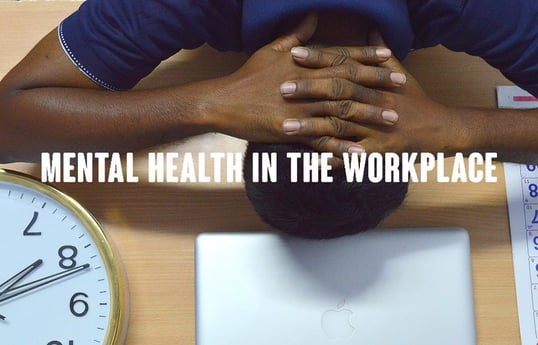October HSR Update - Mental Health in the Workplace
October is Mental Health month and in recognition of this important month there is Mental Health week from the 8th to the 16th of 2022 where there are events happening all over Queensland.
I encourage everyone to try and get along to at least one event in your area. You won’t be disappointed.
You can access the events by clicking on either of these links.
Queensland Mental Health Week - Search For Events Near You (qldmentalhealthweek.org.au)
Mental Health Week events | WorkSafe.qld.gov.au
Dealing with work related mental health issues
What defines mental health?
Mental health encompasses emotional, psychological, and social well-being. It influences cognition, perception, and behaviour. It also determines how an individual handles stress, interpersonal relationships, and decision making. Mental health includes subjective well-being, perceived self-efficacy, autonomy, competence, intergenerational dependence, and self-actualisation of one’s intellectual and emotional potential, among others. From the perspectives of positive psychology or holism, mental health may include an individual’s ability to enjoy life and to create a balance between life activities and efforts to achieve psychological resilience. Cultural differences, subjective assessments, and competing professional theories all affect how one defines “mental health”. Some early signs related to mental health problems are sleep irritation, lack of energy and thinking of harming yourself or others.'


What is a mentally healthy workplace?
‘A mentally healthy workplace is one that: supports the recovery of workers returning after a physical or psychological injury’.
Workplace Health and Safety Queensland (Worksafe) defines a mentally healthy workplace as one that:
- promotes workplace practices that support positive mental health
- eliminates and minimises psychological health and safety risks through the identification and assessment of psychosocial hazards
- builds the knowledge, skills, and capabilities of workers to be resilient and thrive at work
- is free of stigma and discrimination
- supports the recovery of workers returning after a physical or psychological injury.
Mental Health and the Workplace
Psychological health and safety is about protecting the psychological health of workers, in the same way that we protect their physical health.
Positive mental health is referred to and is defined as ‘a state of well-being in which every individual realises his or her own potential, can cope with the normal stresses of life, can work productively and fruitfully, and is able to make a contribution to her or his community’. Mental health is different from mental illness and occurs on a continuum. Mental health is not a fixed state and people can move up and down the continuum regularly. At one end of the mental health continuum is optimal wellbeing and functioning whilst at the other end people are likely to be experiencing severe symptoms.

A comprehensive approach to a mentally healthy workplace incorporates four key elements:
• Promote positive mental health at work
• Prevent psychological harm
• Intervene early
• Support recovery

Managing the Mental Health and Safety risks in the workplace
A risk management approach for psychosocial hazards
Risk management is a four-step process for managing health and safety risks in the workplace. The WHS laws require you to manage risks from reasonably foreseeable hazards, including work-related psychosocial hazards. A mentally healthy workplace does not happen by chance or guesswork. You have to think about what could go wrong at your workplace and what the consequences could be. Then you must do whatever you can (in other words, whatever is ‘reasonably practicable’) to eliminate or minimise psychological health and safety risks arising from the business or undertaking.
This process is known as risk management and to properly manage risks, a person must:
- identify hazards
- assess risks
- control risks
- review control measures to ensure they are working as planned.
Identify the hazards and assess and prioritise risks
The first step in the risk management process is to identify workplace hazards. This means looking for the workplace factors that have the potential to cause harm.
These include:
- job demands (high or low)
- low job control
- poor support
- low role clarity
- poor organisational change management
- poor workplace relationships
- low recognition and reward
- poor organisational justice
- fatigue
- work-related violent or traumatic incidents
- remote or isolated work
- poor environmental conditions.
Workers who feel positive about the environment and culture in their workplace are less likely to experience work-related stress, sustain a psychological injury or leave the workplace, and more likely to have better performance and engage in learning and self-development.
For further information on ‘workplace mental health’ and how to achieve a ‘mentally healthy workplace’ go to:
Mentally healthy workplaces toolkit | WorkSafe.qld.gov.au
Mental health | WorkSafe.qld.gov.au
Does your workplace reflect a positive and mentally healthy workplace culture?

For further assistance/information on Workplace Health and Safety (WHS) and the role of a Health and Safety Rep (HSR) contact HSR Support Services; (07) 3010 2555; info@hsrsupport.org.au.

